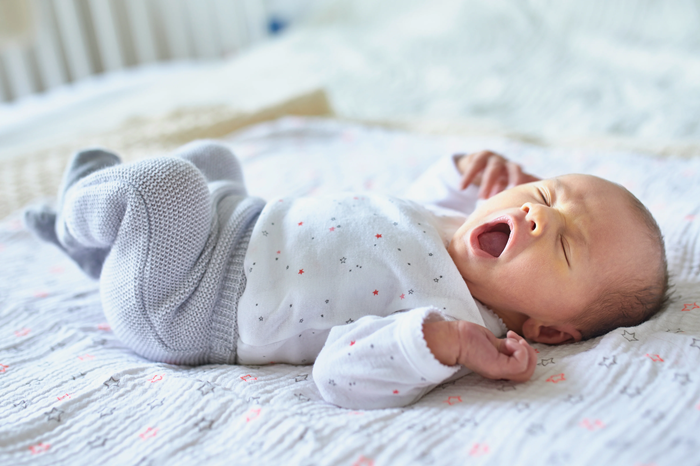Choosing the right clothing for your newborn in winter is essential. Infants are more sensitive to temperature changes. They cannot regulate their body heat as well as adults. Thus, it is crucial to ensure they stay warm and comfortable during sleep. This article will guide you on what to dress your newborn in for winter sleep.
Understanding Temperature Regulation in Newborns
Newborns have a higher body surface area to volume ratio. This means they lose heat more quickly than older children and adults. Their skin is also thinner and more delicate. This makes them vulnerable to cold. To help your newborn maintain a stable body temperature, it is vital to dress them appropriately.
Newborns should be kept at a comfortable temperature. The ideal room temperature for a sleeping infant is between 68°F and 72°F (20°C to 22°C). You can check the temperature with a room thermometer. It is essential to create a safe sleeping environment for your baby.
Choosing the Right Fabrics
When dressing your newborn for winter sleep, fabric choice is crucial. Natural fibers like cotton and wool are great options. Cotton is soft and breathable. It helps regulate temperature. Wool provides extra warmth but should be placed away from your baby’s skin to avoid irritation.
Avoid synthetic materials. They do not allow the skin to breathe. They may trap heat and lead to overheating. Always opt for breathable, comfortable fabrics. This helps to keep your baby cozy without making them too warm.
Dressing Your Newborn for Sleep
When dressing your newborn for sleep in winter, layering is the best approach. Layers allow you to adjust your baby’s clothing according to the room temperature. Here are some clothing items to consider:
1. Sleep Sacks
Sleep sacks are a popular option for newborns. They are designed to replace loose blankets in the crib. A sleep sack provides warmth while keeping your baby safe. They come in various materials and thicknesses. Choose a thicker sleep sack for colder nights.
Ensure the sleep sack fits well. It should be snug around the neck and arms to prevent slipping. However, it should not be too tight. Your baby should have enough room to move their legs. Sleep sacks are available in various sizes, so choose the appropriate one for your newborn.
2. Footed Pajamas
Footed pajamas are another excellent choice for winter sleep. They provide full-body coverage. This keeps your baby warm from head to toe. Look for pajamas made of soft, breathable fabric. Fleece pajamas are great for colder nights. They provide extra warmth without being too bulky.
Check for features like zippers or snaps for easy diaper changes. Ensure the pajamas are not too tight. Your baby should be comfortable and able to move freely. Footed pajamas are convenient and can keep your baby cozy during the night.
3. Long-Sleeved Onesies
Long-sleeved onesies can be worn under sleep sacks or footed pajamas. They provide an extra layer of warmth. Look for onesies made of soft cotton or thermal material. They should be snug but not restrictive.
When dressing your newborn, consider the temperature of the room. If it is particularly cold, layering a long-sleeved onesie under a sleep sack can help. This combination keeps your baby warm without overheating.
4. Hats and Mittens
In extremely cold weather, consider adding a hat and mittens. A soft, lightweight hat helps retain body heat. Babies lose a lot of heat through their heads. A hat can keep them warm during sleep.
Mittens help keep your baby’s hands warm. They also prevent your baby from scratching their face. Look for mittens made from soft materials that are comfortable against your baby’s skin. Ensure they fit snugly but are not too tight.
Monitoring Your Baby’s Comfort
Once your newborn is dressed for sleep, it’s important to monitor their comfort. Check your baby’s body temperature periodically. You can do this by feeling their neck or back. If they feel warm and sweaty, they may be too hot. If their skin feels cool, they might need an extra layer.
Be cautious of overheating. Signs include sweating, flushed cheeks, or rapid breathing. If you notice these signs, remove a layer of clothing or adjust the room temperature. It’s better to start with one layer and add more if needed.
Creating a Safe Sleep Environment
Apart from dressing your newborn appropriately, a safe sleep environment is essential. The crib should be free of soft bedding, pillows, and toys. These items can pose a suffocation risk. Use a firm mattress and a fitted sheet.
Ensure the crib is placed away from drafts. Check for any gaps or openings where cold air could enter. It is crucial to keep the sleeping area warm and cozy. However, avoid overheating.
See also: When To Stop Using A Bath Seat
Conclusion
Dressing your newborn for sleep in winter requires careful consideration. Always prioritize your baby’s comfort and safety. Opt for breathable fabrics and layer clothing as needed.
Using sleep sacks, footed pajamas, and long-sleeved onesies can keep your baby warm without overheating. Monitor your baby’s temperature regularly and adjust their clothing accordingly.
Create a safe sleeping environment free from soft bedding and drafts. Following these guidelines will help ensure your newborn sleeps comfortably and safely during winter nights.
Related topics:


